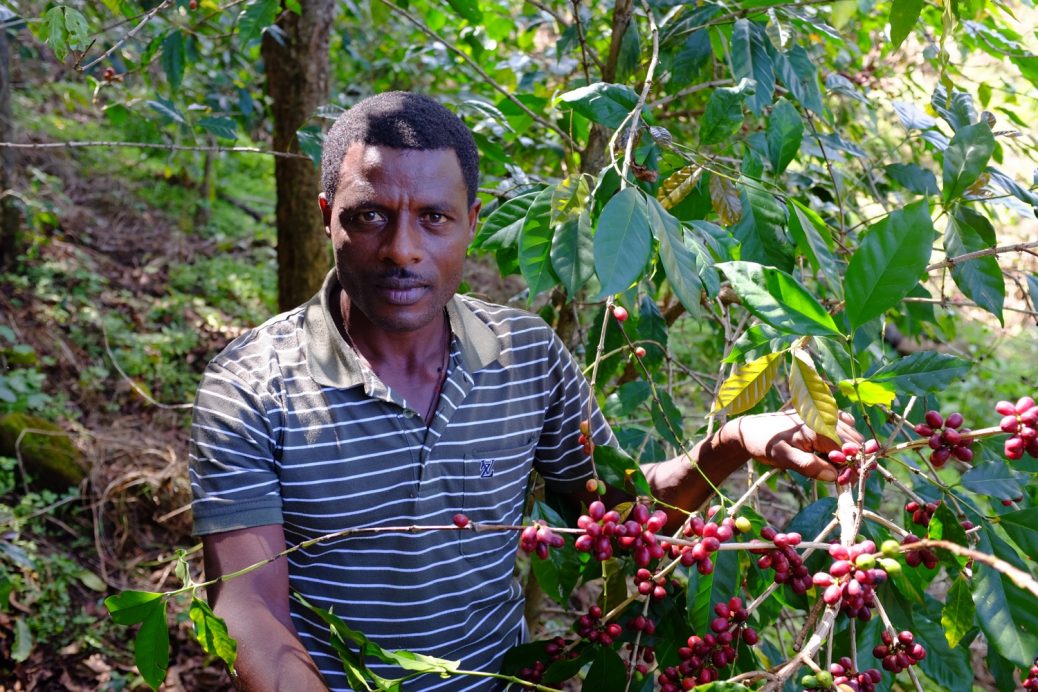Since November 2016, Emily McIntyre has been living in Ethiopia with her husband and five-year-old daughter, Eire. As part of their work with Catalyst Coffee Consulting, the McIntyres have been traveling around the country to partner with producers, mills, and processing/export professionals. Their efforts are focused on education, deepening relationships, and moving toward truly progressive Ethiopian coffee. Read part one, part two, and part three.
[T]he Land Cruisers take us as far as they can: a narrow copse of thorny bushes pointing to a long, muddy lane. The lane leads past a circular threshing floor, surrounded by golden domes of hay, and up the mountain to Deribe Wubayehu’s farm. The hot mountain sun scalds our heads as we hike; a growing tail of youngsters follows, hooting with excitement.
Deribe’s coffee farm is one of the most beautiful we have seen anywhere in the world. He takes a palpable pride in ushering guests to the small patio by his house and feeding them the coarse, waxy golden honey he nurtures on his farm. Wide drying beds stripe the lawn by his house, where beautiful red cherries lie shriveling. The beds rise as high as the neck of the girl carrying her naked-ass brother on her hip, and they are too wide for only one person to reach across to stir the cherries.
(Photos: Emily McIntyre.)
This will be our third year tasting Deribe’s coffee. Michael has given him feedback, and we’ve visited his farm several times to both learn about it and to make suggestions for better processing. Standing there with the hike still drying on me, I feel a shiver go down my spine when he says, “I used the floating tanks like you said,” then retrieves a wide blue bucket to show us.
In November we brought plastic buckets and demonstrated how by floating freshly picked cherries in water for a few minutes, agitating them—water droplets flying in the sun—every once in a while, the lower-density cherries would rise to the top and leave the healthier cherries in the bottom. The water can be reused many times. We demonstrated, and it was fun, but we weren’t certain if anyone would incorporate the additional step into their processing.
Deribe points to the pile of deformed, green, and flawed cherries resting on the far end of the drying table. “These are the floaters,” he says, and extends a long finger to a beautifully uniform batch of coffee just a day or two off the trees nearby. “This is the coffee after we removed them.”
In a recent cupping event in Gololcha, Deribe’s 2017 coffee stood out with memorable qualities: peach pie; deep, spicy mango; and madeira. The results are in the cup, and it’s a huge validation for all of our work, on both sides of the world.
—Emily McIntyre is a regular contributor to Fresh Cup, and the co-founder of Catalyst Coffee Consulting and Crema.co.















